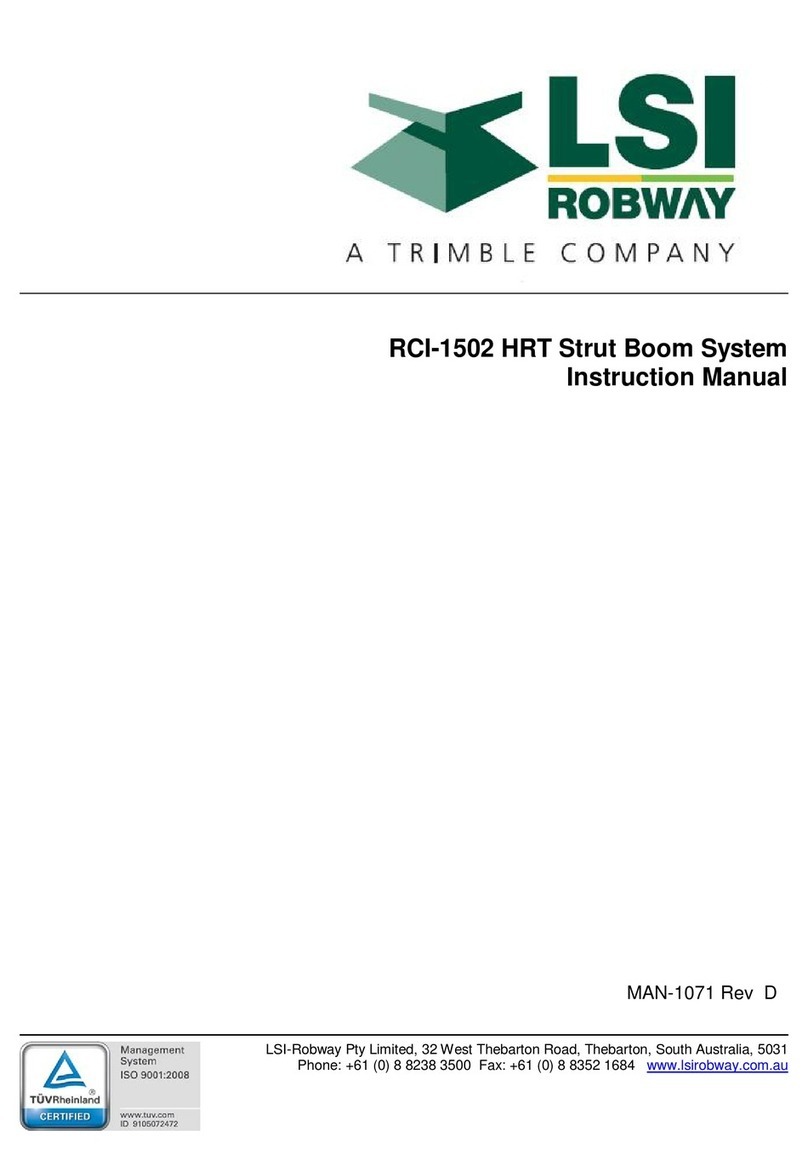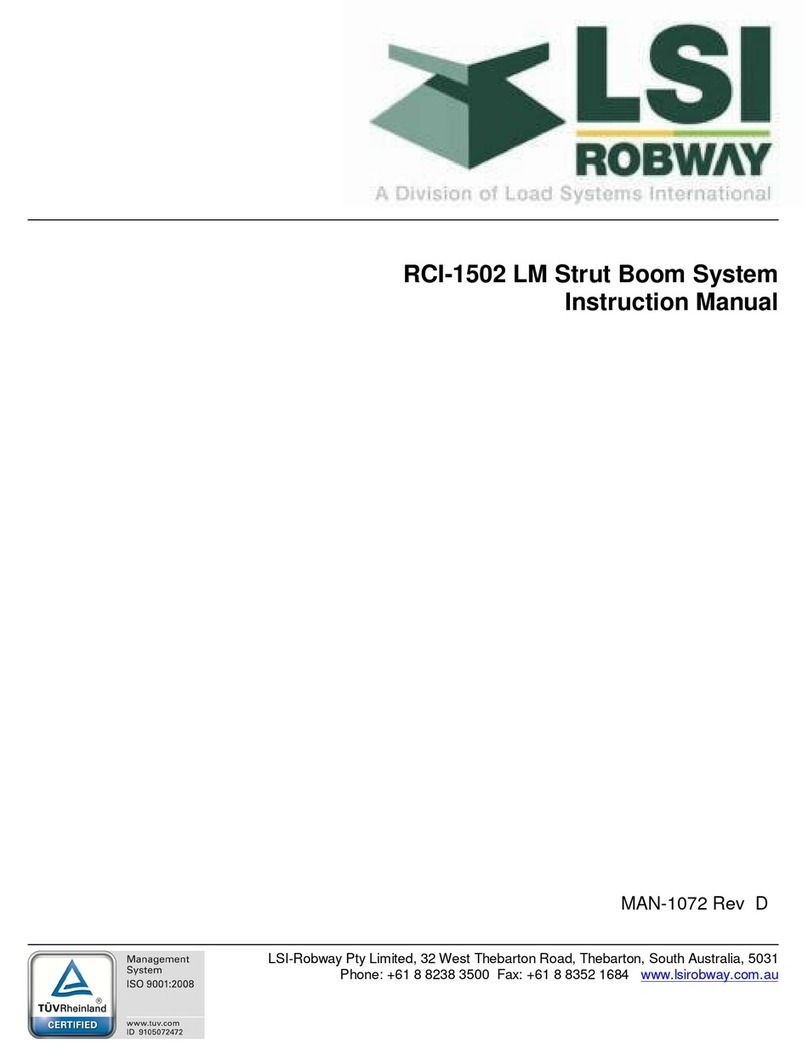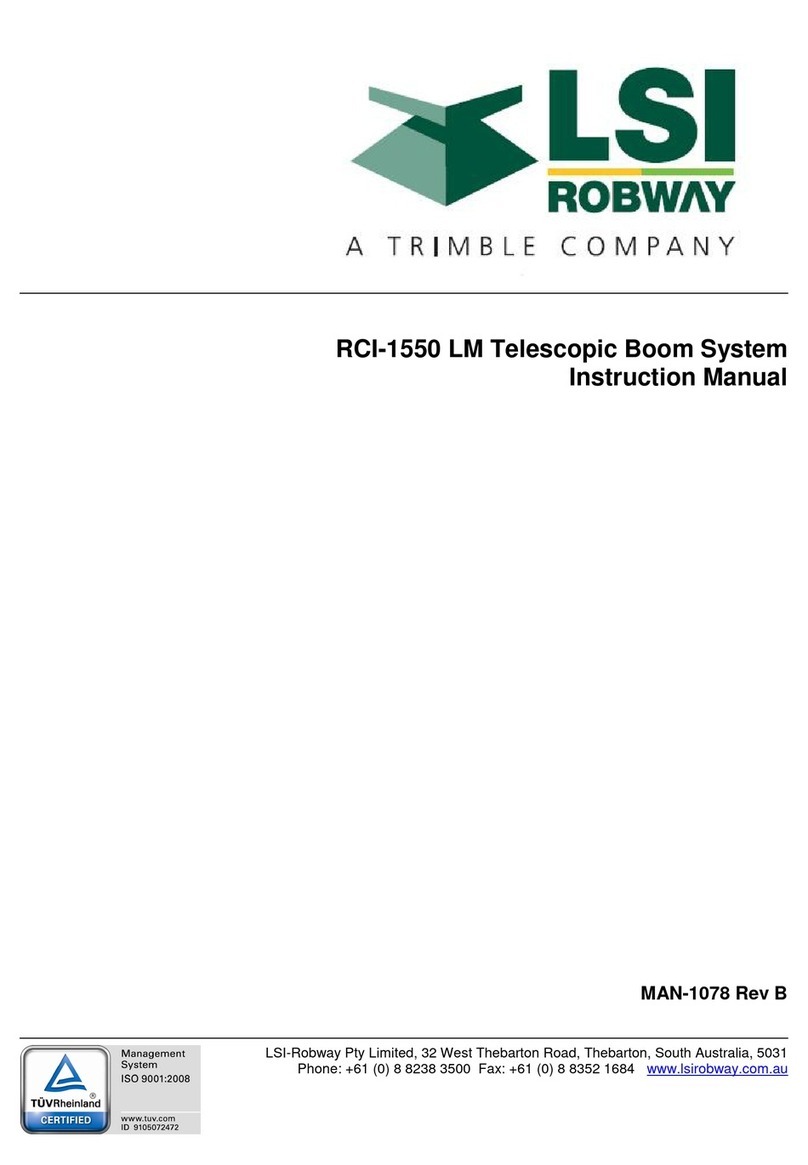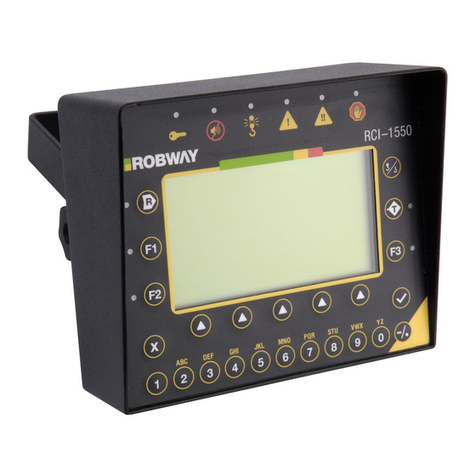
RCI-1502 HRT Tele Boom Manual
Contents Page No.
1. Important Safety Notice................................................................................... 3
2. General Description......................................................................................... 4
3. Operating Instructions..................................................................................... 5
3.1. Turning On the RCI-1502................................................................... 5
3.2. Turning Off the RCI-1502 .................................................................. 5
3.3. Operating Screen............................................................................... 6
3.4. Display Functions.............................................................................. 7
3.5. Data Logging and Data Downloading.............................................. 9
4. Installation ........................................................................................................ 10
5. Calibration......................................................................................................... 17
5.1. Verifying Operation of Sensors........................................................ 20
5.2. Configuring User Variables .............................................................. 21
5.3. Calibrating Main Boom Angle........................................................... 28
5.3.1. Calibrating Low Boom Angle............................................. 28
5.3.2. Calibrating High Boom Angle............................................ 28
5.4. Calibrating Main Boom Length......................................................... 29
5.4.1. Calibrating Short Boom Length......................................... 29
5.4.2. Calibrating Long Boom Length ......................................... 29
5.5. Calibrating Load on the MAIN Winch............................................... 30
5.5.1. Calibrating Light Main Load............................................... 30
5.5.2. Calibrating Heavy Main Load............................................. 30
5.6. Calibrating Load on the AUX. Winch (Twin Winch)........................ 31
5.6.1. Calibrating Light Aux Load................................................ 31
5.6.2. Calibrating Heavy Aux Load .............................................. 31
5.7. Copying and Restoring Calibration Data Function ........................ 32
6. Troubleshooting............................................................................................... 38
7. Electrical Specifications.................................................................................. 45
8. Appendices....................................................................................................... 48

































